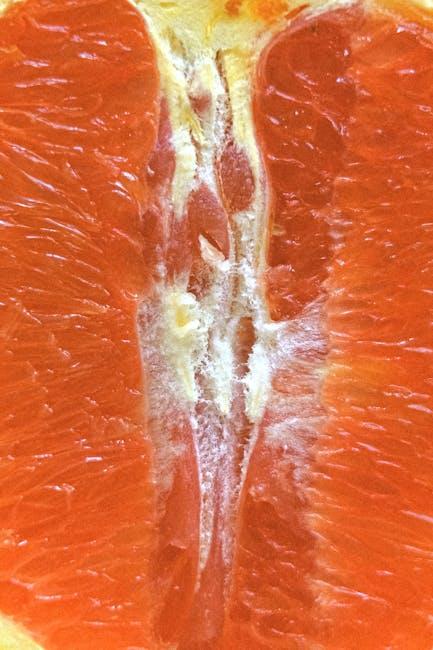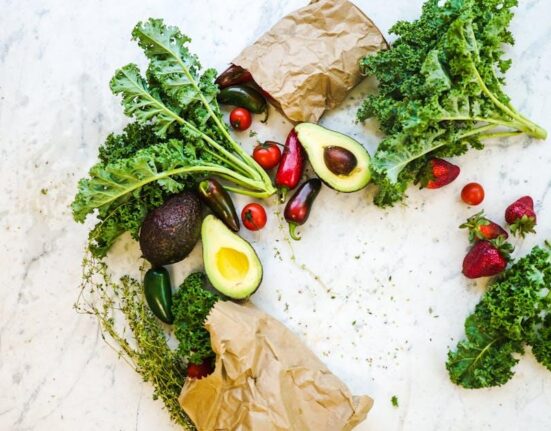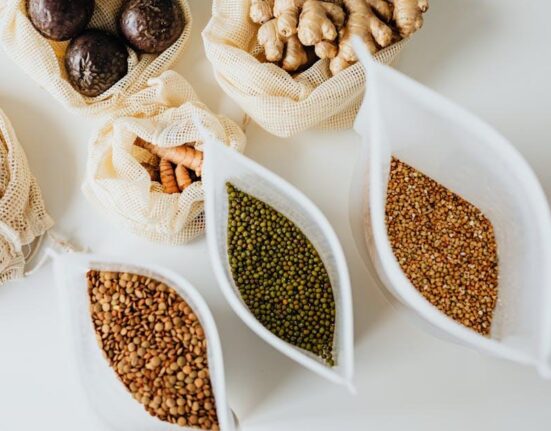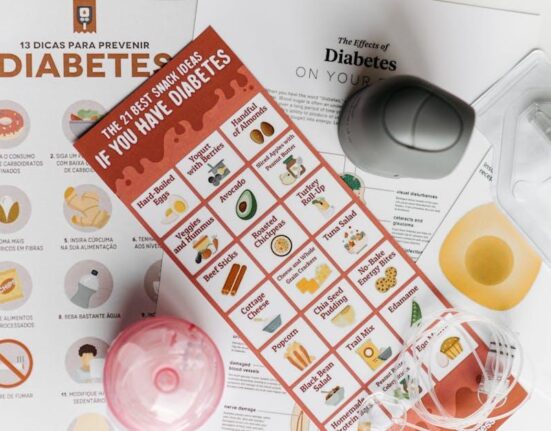Imagine unlocking a nutritional roadmap designed not just to nourish, but to heal from within—a journey that dives deep into the intricate connection between our gut and overall health. The GAPS diet, short for Gut and Psychology Syndrome, is more than a dietary plan; it’s a carefully structured pathway aimed at restoring balance to the digestive system, often with profound effects on mental and physical well-being. In this article, we’ll demystify the stages of the GAPS diet, guiding you through each phase with clear explanations and insights, so you can understand how this transformative approach unfolds and what to expect along the way. Whether you’re considering the diet for yourself or simply curious about its principles, this guide will illuminate the steps that make the GAPS journey both practical and purposeful.
Table of Contents
- Understanding the Foundation of the GAPS Diet and Its Core Principles
- Navigating the Introduction Phase with Focused Food Choices
- Maximizing Nutrient Absorption During the Full GAPS Diet Stage
- Tailoring the GAPS Protocol for Long-Term Health and Maintenance
- Practical Tips for Overcoming Common Challenges on the GAPS Journey
- Q&A
- Future Outlook

Understanding the Foundation of the GAPS Diet and Its Core Principles
The GAPS Diet is grounded in the science of gut health, focusing on healing and sealing the digestive tract to improve overall well-being. It supports the body’s natural ability to repair by eliminating foods that irritate the gut and introducing nutrient-dense, easy-to-digest meals. Central to this approach is the acknowledgment that a damaged gut lining can contribute to various health issues, including digestive disorders, autoimmune conditions, and even neurological symptoms. By restoring gut flora balance and improving digestion, the GAPS Diet fosters a healthier internal environment for lasting change.
At its core, the diet is guided by several key principles that ensure effective healing and nourishment:
- Elimination of complex carbohydrates: To reduce fermentation and toxic buildup in the gut.
- Introduction of natural probiotics: Through fermented foods that help rebuild beneficial gut bacteria.
- Use of homemade broths and soups: Rich in gelatin and amino acids to soothe the digestive lining.
- Gradual food reintroduction: Tailored stages to gently prepare the system for diverse food groups.
- Focus on nutrient density: Prioritizing unprocessed, whole foods packed with vitamins and minerals.
| Principle | Purpose | Example Foods |
|---|---|---|
| Gut Healing | Repair intestinal lining | Bone broth, gelatin |
| Microbiome Balance | Restore beneficial bacteria | Fermented vegetables, kefir |
| Digestive Rest | Reduce inflammation | Elimination of grains, sugars |
| Nutritional Support | Boost immune function | Organic meats, fresh vegetables |

Navigating the Introduction Phase with Focused Food Choices
When beginning the GAPS Diet, careful attention to food selection is crucial to support digestive healing while minimizing discomfort or adverse reactions. The introduction phase emphasizes nutrient-dense, easily digestible foods that provide gut-repairing properties without overloading the system. Bone broths, fermented vegetables, and high-quality fats form the cornerstone of this stage, offering both nourishment and anti-inflammatory benefits.
To simplify choices and ensure balanced nutrition, focus on these key food groups:
- Homemade meat and fish stocks: Rich in gelatin and minerals
- Organ meats: Powerhouses of vitamins and cofactors
- Fermented foods: Natural probiotics to enhance gut flora
- Non-starchy vegetables: Easily digested and low in fiber
- Natural fats: Including ghee and animal fats for energy
| Food Category | Benefits | Typical Serving |
|---|---|---|
| Bone Broth | Supports gut lining repair | 1 cup per meal |
| Fermented Vegetables | Restores microbial balance | 2-3 tablespoons daily |
| Grass-fed Meat | Lowers inflammation, provides protein | 3-4 oz per meal |

Maximizing Nutrient Absorption During the Full GAPS Diet Stage
To truly harness the benefits of the full GAPS diet, attention must be paid to the small yet powerful factors that enhance nutrient absorption. Prioritizing the consumption of homemade bone broths, rich in gelatin and minerals, helps heal and seal the gut lining, making nutrients more bioavailable. Pair this with fermented vegetables and probiotic foods to rebalance gut flora, which plays a crucial role in digestion and nutrient uptake. The timing of meals matters as well; eating smaller, more frequent meals can prevent overloading the digestive system, helping maximize efficiency in absorbing vitamins and minerals.
In addition to food choices, simple lifestyle adjustments are essential. Techniques like chewing food thoroughly, avoiding water with meals to maintain optimal stomach acid levels, and managing stress through mindfulness can significantly improve digestion and absorption. Below is a quick reference table summarizing key practices that support nutrient uptake during this stage:
| Practice | Benefit |
|---|---|
| Bone Broth Consumption | Heals gut lining; rich in minerals |
| Fermented Foods | Restores healthy gut flora |
| Smaller, Frequent Meals | Prevents digestive overload |
| Thorough Chewing | Enhances salivary enzymes and breakdown |
| Avoiding Water with Meals | Preserves stomach acid for digestion |
| Stress Management | Improves digestive enzyme production |

Tailoring the GAPS Protocol for Long-Term Health and Maintenance
Once the initial intensive stages of the GAPS protocol have been completed, it’s essential to shift focus towards creating a sustainable, personalized maintenance plan that supports long-term well-being. This involves gradually reintroducing a wider variety of nutrient-dense foods, while carefully monitoring how your body responds to each addition. Keep in mind that maintenance isn’t simply about avoiding symptoms but fostering a balanced microbial environment in the gut that promotes resilience and vitality.
A successful long-term approach includes mindful adjustments that honor your unique biochemical makeup and lifestyle needs. Consider incorporating these key strategies to optimize ongoing health:
- Regularly cycling probiotics and fermented foods to nourish beneficial gut flora
- Prioritizing homemade bone broths and fermented vegetables for digestive support
- Emphasizing seasonal, unprocessed whole foods to diversify nutrient intake
- Listening closely to your body’s signals and customizing the protocol accordingly
| Maintenance Phase | Focus Area | Example Foods |
|---|---|---|
| Phase 1 | Gut flora stabilization | Fermented vegetables, homemade yogurt |
| Phase 2 | Nutritional diversity | Seasonal fruits, nuts, high-quality meats |
| Phase 3 | Immune support | Bone broth, omega-3 rich foods |

Practical Tips for Overcoming Common Challenges on the GAPS Journey
Embarking on the GAPS diet can feel challenging, but tackling common obstacles with practical strategies makes the journey smoother. Start by prioritizing meal planning—preparing foods in advance reduces daily stress and keeps you aligned with the diet’s specific requirements. Incorporating kitchen tools like slow cookers or pressure cookers can save time and enrich flavors, turning nutrient-dense meals into convenient delights. Additionally, staying hydrated and embracing gentle physical activity helps support digestion and energy levels during the transition periods. Remember, flexibility is key: allow room for small adjustments while remaining committed to core GAPS principles.
- Keep a food diary: Track symptoms and progress to identify triggers or improvements.
- Build a support network: Connect with online forums or local groups for encouragement and recipe ideas.
- Introduce new foods gradually: This helps the digestive system adjust without overwhelming it.
- Focus on gut-soothing ingredients: Bone broth, fermented vegetables, and herbal teas encourage healing.
| Challenge | Tip |
|---|---|
| Digestive discomfort | Start with gentle broths and slowly increase complexity |
| Lack of variety | Experiment with herbs and fermentation recipes |
| Social gatherings | Bring your own dish or eat beforehand |
Q&A
Q&A: Stages of the GAPS Diet Explained
Q1: What is the GAPS diet, and why does it have different stages?
A1: The GAPS diet, which stands for Gut and Psychology Syndrome, is a nutritional protocol designed to heal the gut lining, reduce inflammation, and support mental health through dietary changes. Its stages exist to gradually reintroduce foods, ensuring the digestive system is not overwhelmed and allowing the gut to mend slowly and effectively.
Q2: How many stages are there in the GAPS diet, and what is the general progression?
A2: The GAPS diet is typically divided into six key stages, starting with the Introduction Diet and progressing to the Full GAPS Diet. The journey moves from easily digestible, gut-healing foods toward a broader, more diverse diet as gut health improves.
Q3: What foods are allowed in the initial stage of the GAPS diet?
A3: The Introduction Diet focuses on easy-to-digest, nutrient-dense foods such as homemade meat broths, fermented vegetables, natural fats like ghee, and soft-cooked eggs. This phase eliminates complex carbohydrates and sugars to reduce gut irritation and inflammation.
Q4: How long does each stage usually last?
A4: The length of each stage varies per individual, depending on the severity of gut issues and personal tolerance. Some may spend a few days on one stage, while others might take several weeks or months. Listening to the body and working with a healthcare professional is essential.
Q5: When can one start reintroducing more varied foods like fruits, nuts, and grains?
A5: More complex foods such as certain fruits, nuts, and eventually soaked or fermented grains are reintroduced gradually in the later stages of the diet. This happens once the gut lining has shown signs of healing, usually during the Full GAPS Diet phase.
Q6: Are there symptoms to watch for during the transition between stages?
A6: Yes, it’s common to experience mild detox symptoms like fatigue or digestive changes when moving through stages. However, severe symptoms may indicate an intolerance to a new food or a need to slow down the transition for better gut recovery.
Q7: Why is patience important when following the stages of the GAPS diet?
A7: Healing the gut is a gradual process that requires time, as the gut lining and microbiome need consistent care to restore balance. Jumping ahead too quickly can cause setbacks, while patient progression nurtures lasting digestive health and overall wellness.
Q8: Can everyone follow the GAPS diet stages the same way?
A8: No. The GAPS diet is highly individualized. Factors like underlying health conditions, age, and sensitivity to foods affect how one moves through the stages. Personalization and professional guidance help tailor the diet for optimal results.
Future Outlook
As you journey through the stages of the GAPS diet, remember that each phase is a stepping stone toward restoring balance and vitality within. Whether you’re just beginning to reintroduce nourishing foods or carefully expanding your diet to include a wider variety, patience and mindfulness are your greatest allies. Embracing the process one stage at a time allows your body to heal at its own pace—turning each meal into an opportunity for renewal. Ultimately, the GAPS diet is more than just a protocol; it’s a pathway to reconnecting with the natural rhythms of health from the inside out.














Leave feedback about this